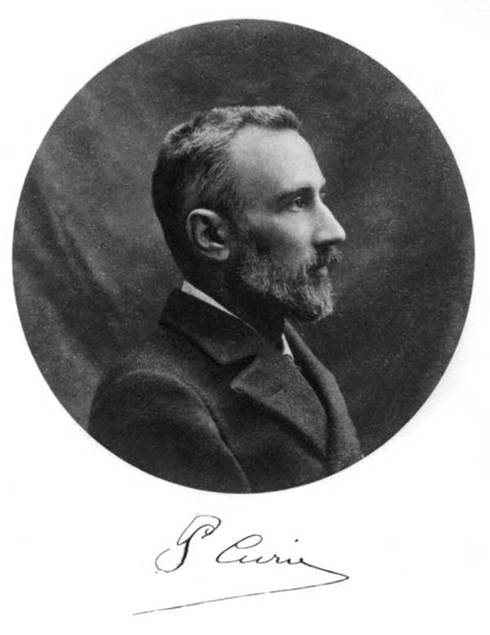The mineralogy of Polonium
| About Polonium |
|---|
| Polonium has no stable isotopes and is only found in nature in trace amounts as a radioactive decay product in some radioactive minerals. |
| General Properties | |
|---|---|
| Symbol: | Po |
| Atomic Number: | 84 |
| Standard atomic weight (Ar): | [209] |
| Electron configuration: | [Xe] 4f14 5d10 6s2 6p4 |
| Photos | ||
|---|---|---|
A thin film of polonium on a stainless-steel disk |
| Atomic Properties | |
|---|---|
| Electronegativity (Pauling scale): | 2 |
| Atomic Radius: | 135 pm |
| Ionic Radius: | 94 pm (+4) |
| 1st Ionization energy: | 812 kJ/mol |
| 1st Electron affinity: | -183 kJ/mol |
| Oxidation States: | -2,2,4,6 |
| Physical Properties | |
|---|---|
| Standard State: | solid |
| Bonding Type: | metallic |
| Melting Point: | 527 K |
| Boiling Point: | 1235 K |
| Density: | 9.2 g/cm3 |
| Metal/Non-Metal: | metalloid |
| Main isotopes of Polonium | ||||
|---|---|---|---|---|
| Isotope | % in Nature | Half Life | Decay type | Decay product |
| 208Po | synthetic | 2.898y | α | 204Pb |
| 208Bi | ||||
| 209Po | synthetic | 125.2±3.3y | α | 205Pb |
| β+ | 209Bi | |||
| 210Po | trace | 138.376d | α | 206Pb |
| Main ions of Polonium | ||||
|---|---|---|---|---|
| Name | Ion | Example minerals | ||
| polonium(II) | Po2+ | |||
| polonium(IV) | Po4+ | |||
| polonium(VI) | Po6+ | |||
| Other Information | |
|---|---|
| Year Discovered: | 1898 |
| Discovered By: | Pierre Curie and Marie Curie |
| Year Isolated: | 1902 |
| Isolated By: | Willy Marckwald |
| Named For: | Poland, homeland of discoverer Marie Curie |
| CPK color coding: | #AB5C00 |
| External Links: | WikipediaWebElementsLos Alamos National LaboratoryTheodore Gray's PeriodicTable.com |
| Simple Compounds | |||||||||||||||||||||||||||||||||||||||||||||||||||||||||||||||||||||||||||||||||||||||||||||||||||||||||||||||||||||||||||||||||||||||||||||||||||||||
|---|---|---|---|---|---|---|---|---|---|---|---|---|---|---|---|---|---|---|---|---|---|---|---|---|---|---|---|---|---|---|---|---|---|---|---|---|---|---|---|---|---|---|---|---|---|---|---|---|---|---|---|---|---|---|---|---|---|---|---|---|---|---|---|---|---|---|---|---|---|---|---|---|---|---|---|---|---|---|---|---|---|---|---|---|---|---|---|---|---|---|---|---|---|---|---|---|---|---|---|---|---|---|---|---|---|---|---|---|---|---|---|---|---|---|---|---|---|---|---|---|---|---|---|---|---|---|---|---|---|---|---|---|---|---|---|---|---|---|---|---|---|---|---|---|---|---|---|---|---|---|---|
| Hydrides | polonium dihydride | PoH2 | +2 | ||||||||||||||||||||||||||||||||||||||||||||||||||||||||||||||||||||||||||||||||||||||||||||||||||||||||||||||||||||||||||||||||||||||||||||||||||||
| Chlorides | polonium dichloride | PoCl2 | +2 | ||||||||||||||||||||||||||||||||||||||||||||||||||||||||||||||||||||||||||||||||||||||||||||||||||||||||||||||||||||||||||||||||||||||||||||||||||||
| polonium tetrachloride | PoCl4 | +4 | |||||||||||||||||||||||||||||||||||||||||||||||||||||||||||||||||||||||||||||||||||||||||||||||||||||||||||||||||||||||||||||||||||||||||||||||||||||
| Bromides | polonium tetrabromide | PoBr4 | +4 | ||||||||||||||||||||||||||||||||||||||||||||||||||||||||||||||||||||||||||||||||||||||||||||||||||||||||||||||||||||||||||||||||||||||||||||||||||||
| Iodides | polonium diiodide | PoI2 | +2 | ||||||||||||||||||||||||||||||||||||||||||||||||||||||||||||||||||||||||||||||||||||||||||||||||||||||||||||||||||||||||||||||||||||||||||||||||||||
| polonium tetraiodide | PoI4 | +4 | |||||||||||||||||||||||||||||||||||||||||||||||||||||||||||||||||||||||||||||||||||||||||||||||||||||||||||||||||||||||||||||||||||||||||||||||||||||
| Oxides | polonium dioxide | PoO2 | +4 | ||||||||||||||||||||||||||||||||||||||||||||||||||||||||||||||||||||||||||||||||||||||||||||||||||||||||||||||||||||||||||||||||||||||||||||||||||||
| Geochemistry of Polonium | |
|---|---|
| Goldschmidt classification: | Chalcophile |
| Elemental Abundance for Polonium | ||
|---|---|---|
| Crust (CRC Handbook) | 2 x 10-16 | mass fraction, kg/kg |
| Sea Water (CRC Handbook) | 1.5 x 10-20 | mass per volume fraction, kg/L |
| Periodic Table | |||||||||||||||||||||||||||||||||||||||||||||||||||||||||||||||||||||||||||||||||||||||||||||||||||||||||||||||||||||||||||||||||||||||||||||||||||||||
|---|---|---|---|---|---|---|---|---|---|---|---|---|---|---|---|---|---|---|---|---|---|---|---|---|---|---|---|---|---|---|---|---|---|---|---|---|---|---|---|---|---|---|---|---|---|---|---|---|---|---|---|---|---|---|---|---|---|---|---|---|---|---|---|---|---|---|---|---|---|---|---|---|---|---|---|---|---|---|---|---|---|---|---|---|---|---|---|---|---|---|---|---|---|---|---|---|---|---|---|---|---|---|---|---|---|---|---|---|---|---|---|---|---|---|---|---|---|---|---|---|---|---|---|---|---|---|---|---|---|---|---|---|---|---|---|---|---|---|---|---|---|---|---|---|---|---|---|---|---|---|---|
| |||||||||||||||||||||||||||||||||||||||||||||||||||||||||||||||||||||||||||||||||||||||||||||||||||||||||||||||||||||||||||||||||||||||||||||||||||||||
| Bismuth << Polonium >> Astatine | |||||||||||||||||||||||||||||||||||||||||||||||||||||||||||||||||||||||||||||||||||||||||||||||||||||||||||||||||||||||||||||||||||||||||||||||||||||||
Spotted a mistake/omission? - These pages are a work in progress, so please send all comments/corrections to jolyon@mindat.org. Thank you.
Constants and physical property data from:
David R. Lide (ed.), CRC Handbook of Chemistry and Physics, 85th Edition. CRC Press. Boca Raton, Florida (2005).
Kaye and Laby Tables of Physical & Chemical Constants (2005). Section 3.1.3, Abundances of the elements
A. Earnshaw, N. Greenwood, Chemistry of the Elements, 2nd edition, Butterworth-Heinemann, (1997)
Thomas J. Ahrens (ed.), Global Earth Physics : A Handbook of Physical Constants, American Geophysical Union (1995)
L.B. Railsback, An Earth Scientist's Periodic Table of the Elements and Their Ions : Geology 31:9 p737-740 (2003)
Emsley, J. Nature's Building Blocks: An A-Z Guide to the Elements. New York: Oxford University Press (2001)






